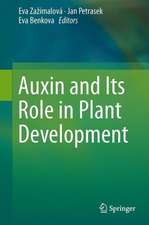Measuring Plant Diversity: Lessons From the Field
Autor Thomas J. Stohlgrenen Limba Engleză Hardback – 30 noi 2006
Preț: 495.65 lei
Preț vechi: 648.95 lei
-24% Nou
Puncte Express: 743
Preț estimativ în valută:
94.89€ • 97.58$ • 78.72£
94.89€ • 97.58$ • 78.72£
Carte tipărită la comandă
Livrare economică 05-11 februarie
Preluare comenzi: 021 569.72.76
Specificații
ISBN-13: 9780195172331
ISBN-10: 0195172337
Pagini: 410
Ilustrații: 120 line illustrations, halftones, tables
Dimensiuni: 236 x 152 x 20 mm
Greutate: 0.7 kg
Editura: Oxford University Press
Colecția OUP USA
Locul publicării:New York, United States
ISBN-10: 0195172337
Pagini: 410
Ilustrații: 120 line illustrations, halftones, tables
Dimensiuni: 236 x 152 x 20 mm
Greutate: 0.7 kg
Editura: Oxford University Press
Colecția OUP USA
Locul publicării:New York, United States





